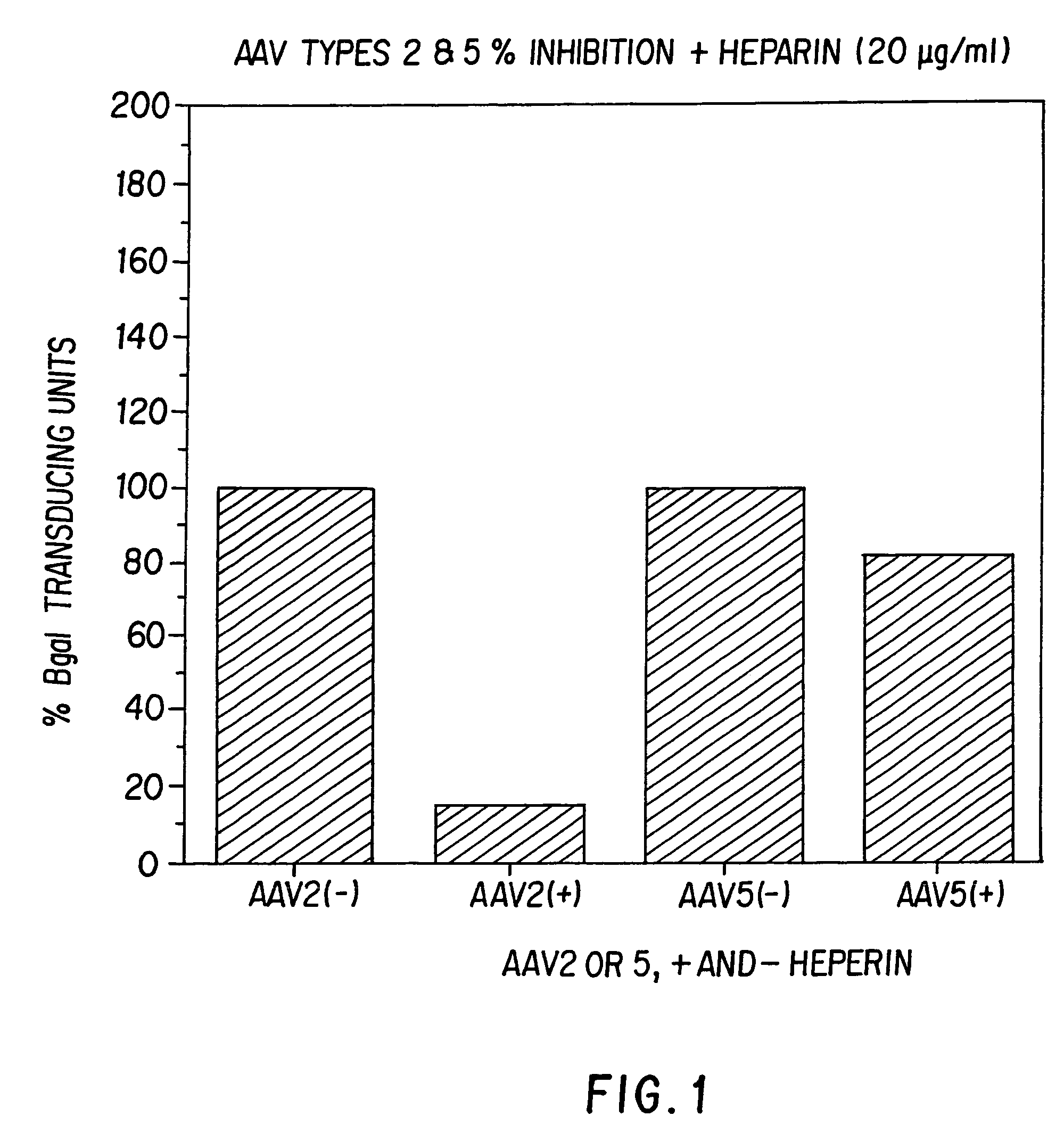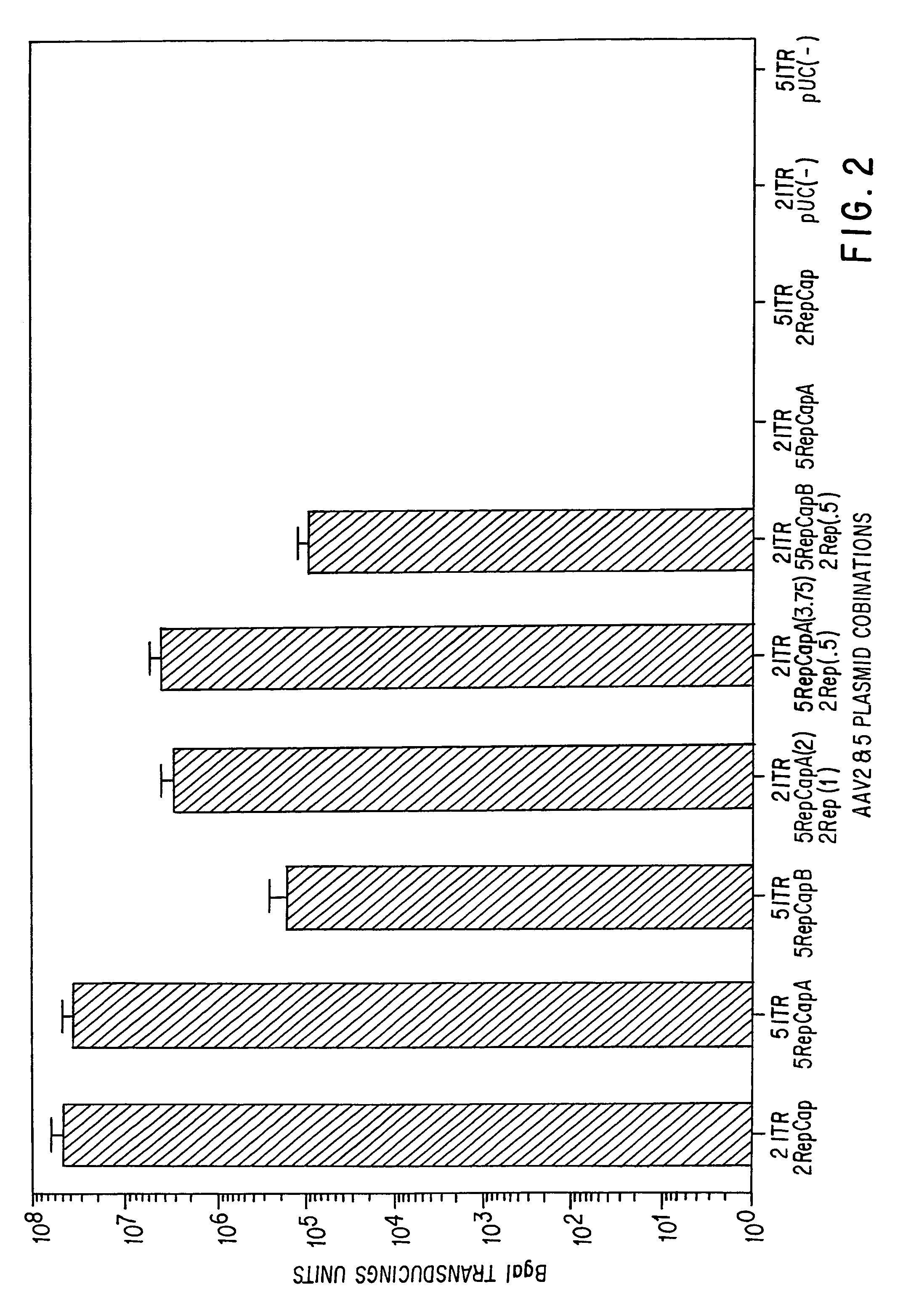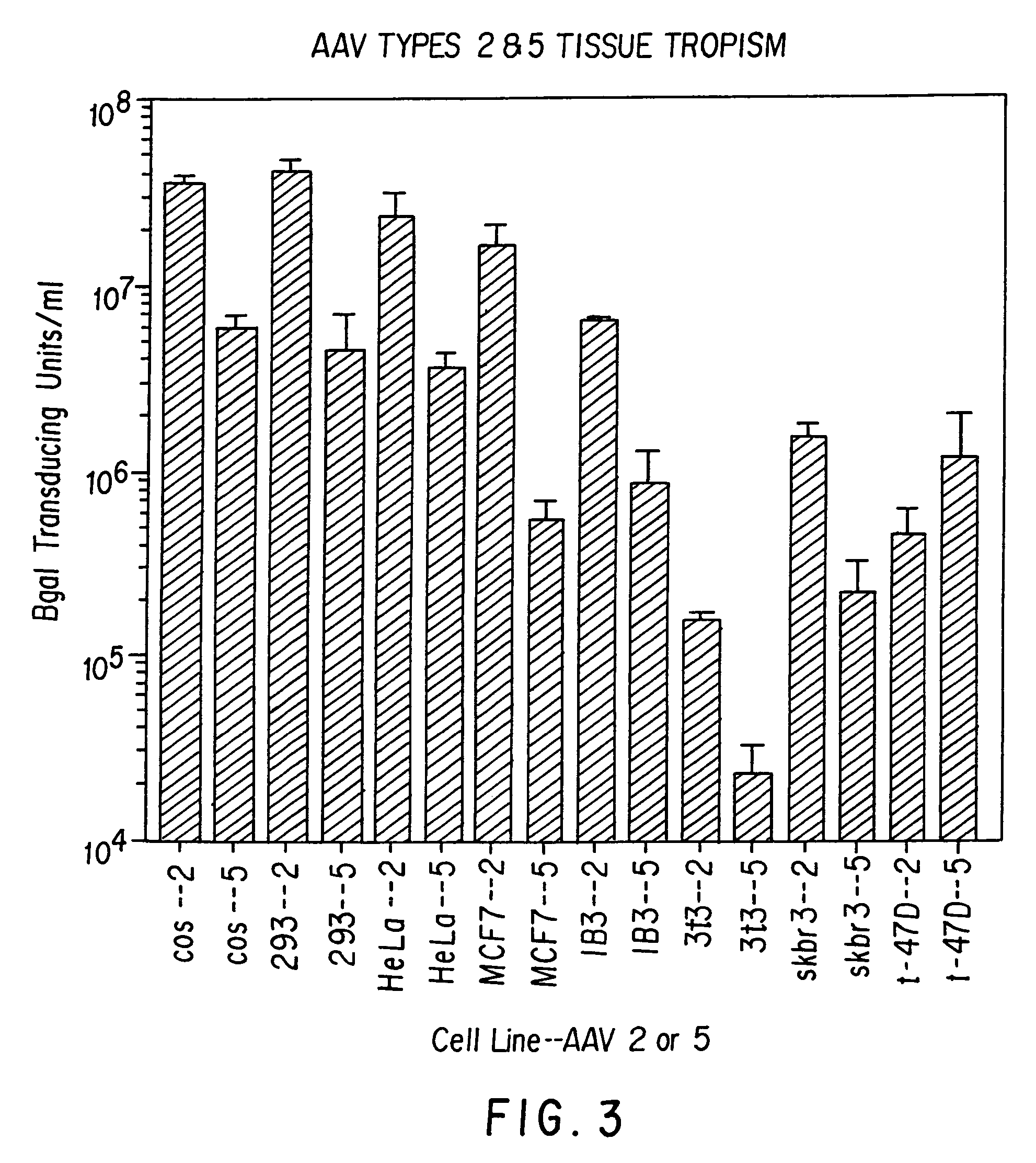AAV5 nucleic acids
a technology of aav5 and nucleic acids, applied in the field of aav5, can solve the problems of loss of replication activity, inability of aav2 to infect certain cell types, and the limitation of using aav2 as a vector for gene therapy, and achieve the effect of large virus production
- Summary
- Abstract
- Description
- Claims
- Application Information
AI Technical Summary
Benefits of technology
Problems solved by technology
Method used
Image
Examples
examples
[0124]To understand the nature of AAV5 virus and to determine its usefulness as a vector for gene transfer, it was cloned and sequenced.
Cell Culture and Virus Propagation
[0125]Cos and HeLa cells were maintained as monolayer cultures in D10 medium (Dulbecco's modified Eagle's medium containing 10% fetal calf serum, 100 μg / ml penicillin, 100 units / ml streptomycin and IX Fungizone as recommended by the manufacturer; (GIBCO, Gaithersburg, Md., USA). All other cell types were grown under standard conditions which have been previously reported.
[0126]Virus was produced as previously described for AAV2 using the Beta galactosidase vector plasmid and a helper plasmid containing the AAV5 Rep and Cap genes (9). The helper plasmid was constructed in such a way to minimize any homologous sequence between the helper and vector plasmids. This step was taken to minimize the potential for wild-type (wt) particle formation by homologous recombination.
DNA Cloning and Sequencing and Analysis
[0127]In or...
PUM
| Property | Measurement | Unit |
|---|---|---|
| diameter | aaaaa | aaaaa |
| Tm | aaaaa | aaaaa |
| Tm | aaaaa | aaaaa |
Abstract
Description
Claims
Application Information
 Login to View More
Login to View More - R&D
- Intellectual Property
- Life Sciences
- Materials
- Tech Scout
- Unparalleled Data Quality
- Higher Quality Content
- 60% Fewer Hallucinations
Browse by: Latest US Patents, China's latest patents, Technical Efficacy Thesaurus, Application Domain, Technology Topic, Popular Technical Reports.
© 2025 PatSnap. All rights reserved.Legal|Privacy policy|Modern Slavery Act Transparency Statement|Sitemap|About US| Contact US: help@patsnap.com



